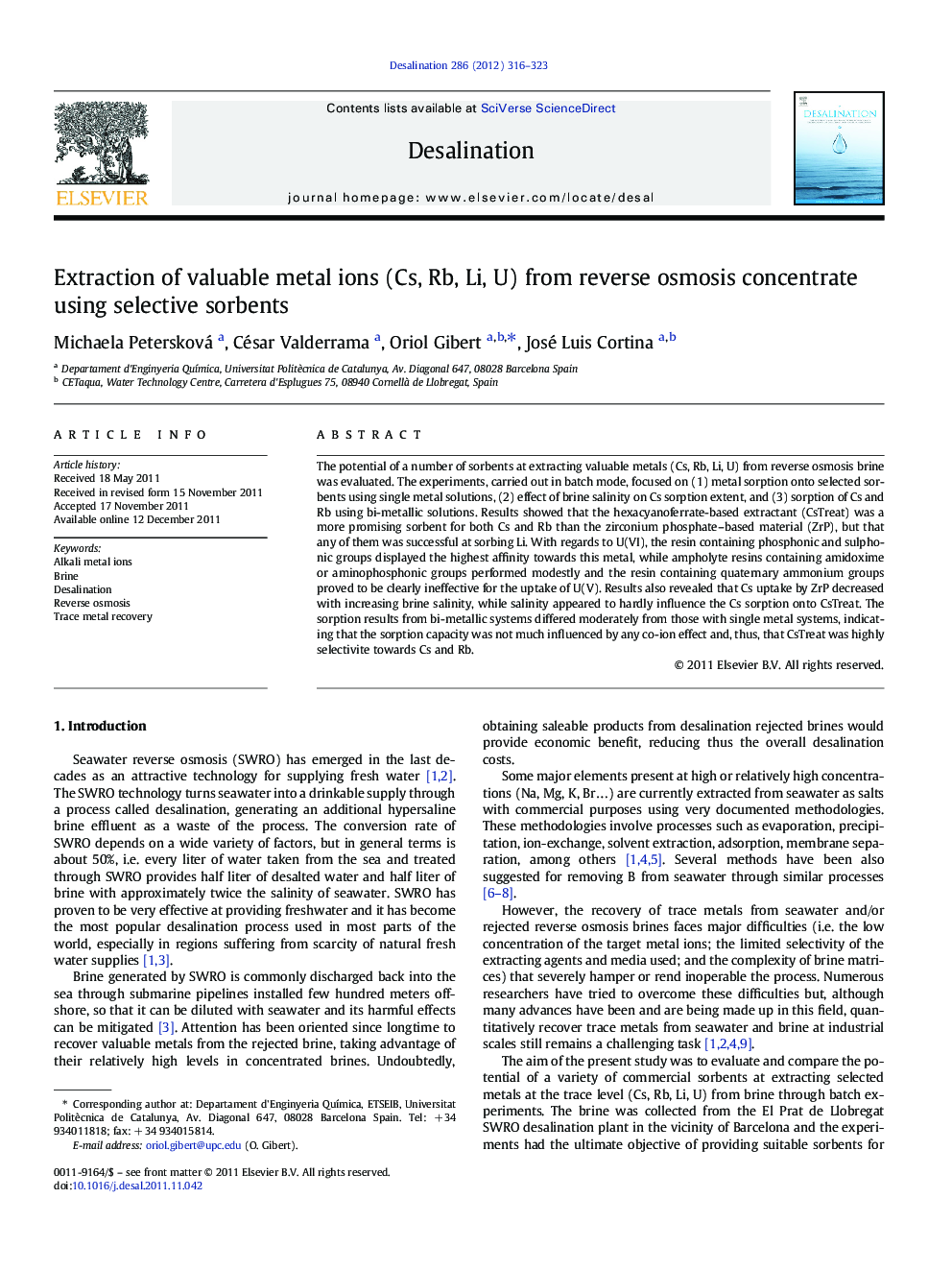| Article ID | Journal | Published Year | Pages | File Type |
|---|---|---|---|---|
| 624523 | Desalination | 2012 | 8 Pages |
The potential of a number of sorbents at extracting valuable metals (Cs, Rb, Li, U) from reverse osmosis brine was evaluated. The experiments, carried out in batch mode, focused on (1) metal sorption onto selected sorbents using single metal solutions, (2) effect of brine salinity on Cs sorption extent, and (3) sorption of Cs and Rb using bi-metallic solutions. Results showed that the hexacyanoferrate-based extractant (CsTreat) was a more promising sorbent for both Cs and Rb than the zirconium phosphate–based material (ZrP), but that any of them was successful at sorbing Li. With regards to U(VI), the resin containing phosphonic and sulphonic groups displayed the highest affinity towards this metal, while ampholyte resins containing amidoxime or aminophosphonic groups performed modestly and the resin containing quaternary ammonium groups proved to be clearly ineffective for the uptake of U(V). Results also revealed that Cs uptake by ZrP decreased with increasing brine salinity, while salinity appeared to hardly influence the Cs sorption onto CsTreat. The sorption results from bi-metallic systems differed moderately from those with single metal systems, indicating that the sorption capacity was not much influenced by any co-ion effect and, thus, that CsTreat was highly selectivite towards Cs and Rb.
► Sorption of valuable metals (Cs, Rb, Li, U) from reverse osmosis brine was studied. ► Hexacyanoferrate CsTreat successfully sorbed Cs (32.36 mg/g) and Rb (46.73 mg/g). ► Li was not appreciably sorbed onto any sorbent, likely due to steric effects. ► Resin Purolite S957 performed the best for U(VI) sorption (22.78 mg/g). ► Salinity did not affect Cs sorption onto CsTreat, but it did onto Zr-phosphate.
